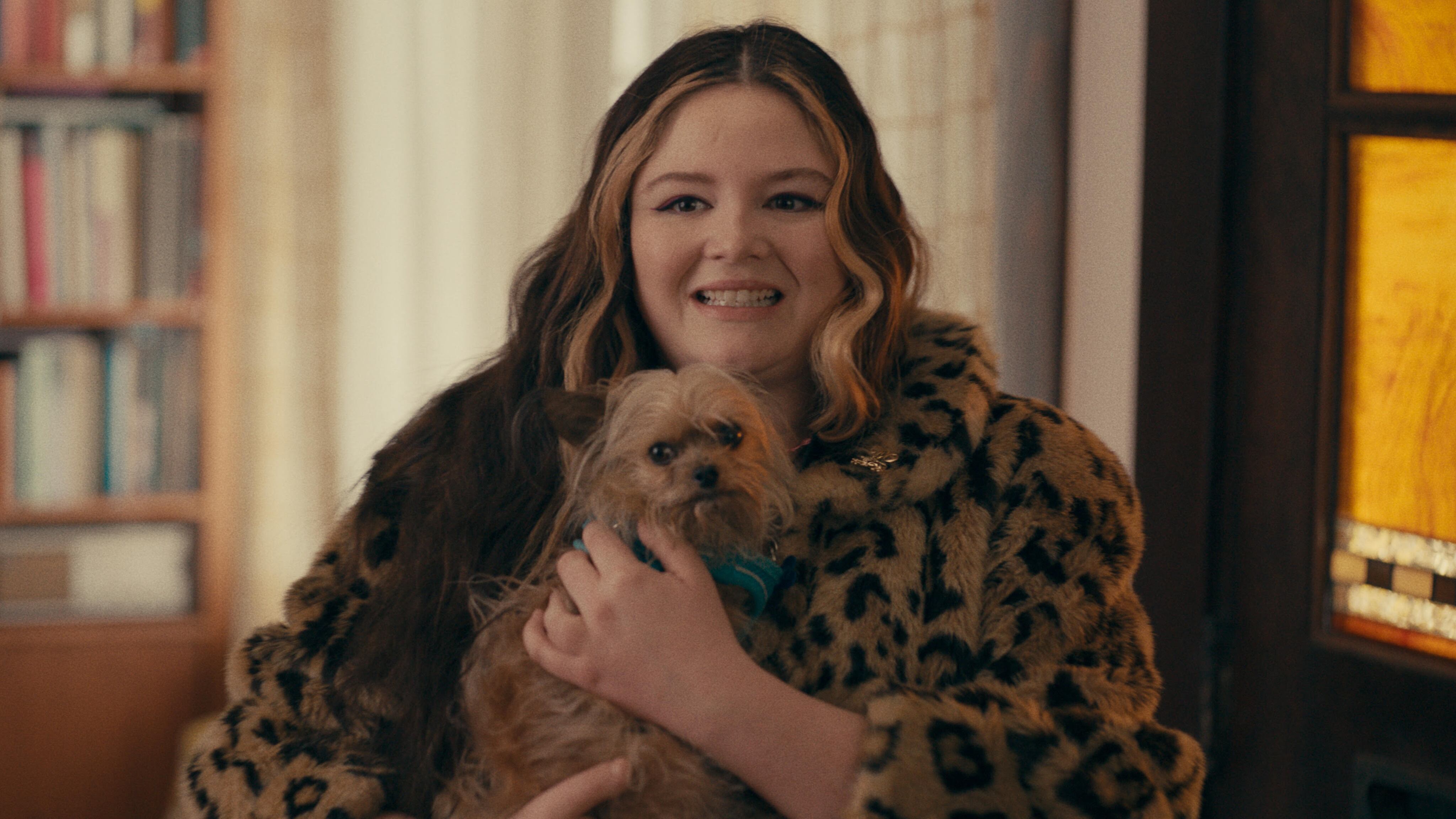The road between Los Angeles and Portland is a well-worn one, especially for artists looking to make it big.
“I’m bicoastal—with only one coast,” says Cora, our protagonist in Cora Bora. The character, played by Meg Stalter (Hacks), is a struggling musician who’s made the jump to L.A. to kick-start her career, but she’s floundering rather than flourishing. Worried things might be falling apart with her long-distance open relationship, she heads home to Portland to see her girlfriend Justine (JoJo T. Gibbs), and—well, let’s not give the whole thing away. Let’s just say, a day in this soggy city unfolds, and as you might’ve already even guessed, chaos is often an avoidance of pain.
For Cora Bora writer Rhianon Jones, creating the film was personal—Jones spent a decade in Portland from 1994 to 2004 steeped in the music scene, playing in multiple bands. (“It was good until it wasn’t,” she says.) And Portland’s venues are at the forefront of Cora Bora—shots of Kenton Club, Mississippi Studios, and Dante’s with bright sonic bursts of an original soundtrack by Miya Folick.
Even with its impressive cast—Stalter, Chelsea Peretti, Margaret Cho, Darrell Hammond, Ayden Mayeri—the film had a quick run in theaters. But it’ll be available for purchase starting July 12, and hopefully streaming soon.
WW spoke with Jones and director Hannah Pearl Utt about Cora-like friends, Portland’s relationship with the film, and the importance of not giving up on someone while they wade through dark days.
WW: What about the time you spent in Portland stayed with you to inspire the film?
Rhianon Jones: Although I’m not a Cora—I think a lot of people want to assume that—I’m friends with Coras, friends I value very much. Some of those friendships started in my time in Portland. When I started the script, I was trying to avoid having it be in Portland in a way because it was a little too personal and I was worried people would think it was autobiographical, but Hannah is such an auteur, and she was like, let’s go deeper.
I had to be honest about a dark time in my life when I decided to leave Portland, after a lot of things had happened in the scene. In the year and a half before I left, I knew 10 people who’d died for various reasons. I wasn’t in the best place in my life. It wasn’t personality-based like it is for Cora, but it was a need to leave and fix my shit. It’s a combination of [that, and] the music scene being such an inspiration.
When you were writing, were you thinking through the framework of that time period, what the music scene was at that time versus now?
I was kind of worried because I’ve been out of the scene for so long that it wasn’t the same, but Hannah and [producers] Tristan [Scott-Behrends] and Mallory [Schwartz], who’ve been able to spend more time in Portland and had more of a current connection, were like, it’s still like that, the music scene is still really vibrant.
It’s a little scary to put a significant time of your life onscreen, so I feel like I was a little resistant, and only because they were in tune with Portland now and knew it was OK to have it be there, that’s what ended up happening.
Hannah, what’s your Portland connection?
Hannah Utt: I had my first experiences of independence in Oregon, so it’s a nostalgic place for me. We shot most of the movie in L.A. and shot all of our exteriors in Portland in four days. We just brought out Meg and the dog and stayed with my cousins—one was our location scout, another was our coordinator (she basically rallied all her friends to be background actors). It was a family affair. The whole movie was like that.
I’m curious how the environment impacted your choice of direction.
It was a challenge. I was worried about doing L.A. for Portland, but it turns out there’s a lot of overlap in the architecture in certain neighborhoods. I worked a lot with my production designer to come up with different palettes for the cities, and different ways of representing Cora’s loneliness—while L.A. is so exposed, Portland has that oppressive gray. We had to just give ourselves over to the weather in Portland because one second it would be gorgeous and the next it would be raining. It wound up being very in line with Cora’s experience. Portland was kind to us in that way.
Stepping back one more time to not being a Cora character, but Cora adjacent in a way, this composite—could I hear more?
Jones: It’s funny because, to be asked as a writer to do what you’re supposed to do and go a little deeper, it’s kind of upsetting. I was nervous to put something real on the page. It was such a gift to work with Hannah to encourage me to do that. I like to make people laugh, but there’s got to be some truth to it if you want to communicate with people, as painful and vulnerable as it is to have it on the screen.
Utt: It started with a mutual love for this type of person, this person in our lives, or this person we’d maybe been at some point, and then the process of rewriting was bringing the audience into why we love them.
Jones: I don’t think somebody being difficult or annoying is a reason not to love them. For me, I wanted to show that there’s still love for messed-up people, you still deserve a chance to mend your ways.
SEE IT: Cora Bora releases on VOD platforms starting July 12.

